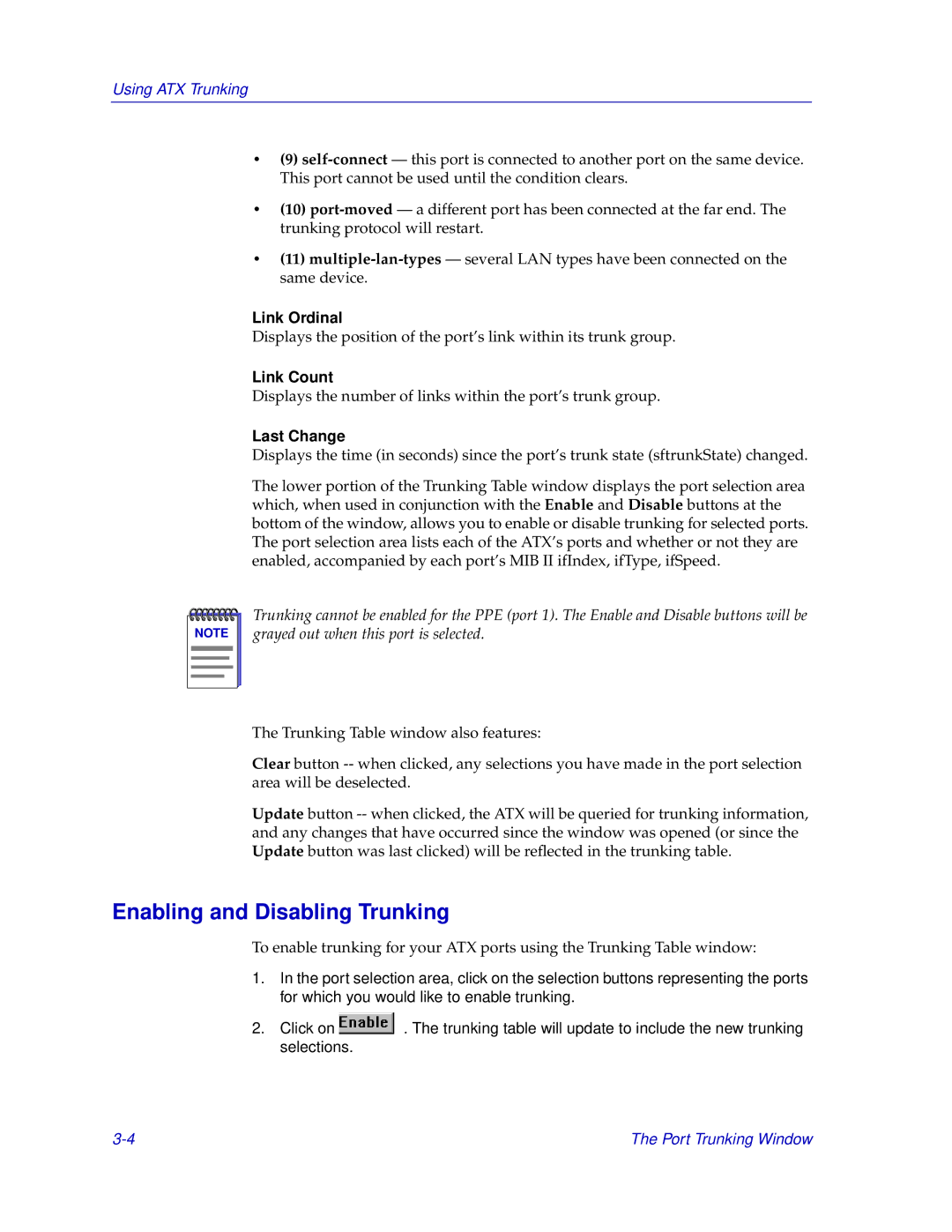
Using ATX Trunking
•(9)
•(10)
•(11)
Link Ordinal
Displays the position of the port’s link within its trunk group.
Link Count
Displays the number of links within the port’s trunk group.
Last Change
Displays the time (in seconds) since the port’s trunk state (sftrunkState) changed.
The lower portion of the Trunking Table window displays the port selection area which, when used in conjunction with the Enable and Disable buttons at the bottom of the window, allows you to enable or disable trunking for selected ports. The port selection area lists each of the ATX’s ports and whether or not they are enabled, accompanied by each port’s MIB II ifIndex, ifType, ifSpeed.
NOTE |
Trunking cannot be enabled for the PPE (port 1). The Enable and Disable buttons will be grayed out when this port is selected.
The Trunking Table window also features:
Clear button
Update button
Enabling and Disabling Trunking
To enable trunking for your ATX ports using the Trunking Table window:
1.In the port selection area, click on the selection buttons representing the ports for which you would like to enable trunking.
2.Click on ![]() . The trunking table will update to include the new trunking selections.
. The trunking table will update to include the new trunking selections.
The Port Trunking Window |
